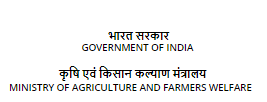Superabsorbent Polymer from Cassava Starch
Background:
Superabsorbent polymers (SAPs) are a unique group of three-dimensional polymeric networks that can absorb over a hundred times their weight in liquids and the absorbed liquid is released slowly when put in the dry air to maintain the moisture of the environment. In agriculture, these can be used as hydrogels to retain the moisture content of soil. Hydrogels act as ‘miniature water reservoirs’ in soil, releasing water into the soil and maintaining moisture balance in the soil. Most of the traditional hydrogels on the market are acrylate-based products, thus not biodegradable and regarded as potential pollutants for the soil. Therefore, currently natural polymer-based SAPs which can be degraded by the enzymatic action of micro-organisms, are gaining more attention.
Technology Details:
Carbohydrate polymers are the most common and renewable materials for the synthesis of biodegradable polymers. Among these, starch-based SAPs are particularly important because of their exceptional properties such as biocompatibility, biodegradability, renewability and non-toxicity. Moreover, starch is widely available and inexpensive. A semi-synthetic superabsorbent polymer was prepared from cassava starch by graft copolymerization with an acrylic monomer and a free radical initiator, followed by alkali saponification. The process was perfected under laboratory conditions and the product was tested for its water conservation potential as well as its effect on soil quality. The water absorbency of cassava starch-based SAP was about 400 g/g. The polymer was found to be effective in soil moisture retention and the watering interval could be prolonged by the application of it. The addition of hydrogel to the soil in combination with watering at an interval of once in three days could increase the porosity and Water Holding Capacity of the soil, maintain higher nutrient levels including the biological property of the soil and better plant growth in comparison to the control treatment with daily watering in the absence of the polymer. The pilot study indicated that this polymer can be used as a soil additive especially under the prevailing situation of reduced moisture availability. Under controlled conditions such as in green houses for plant nurseries and ornamental plants it can be effectively used.


